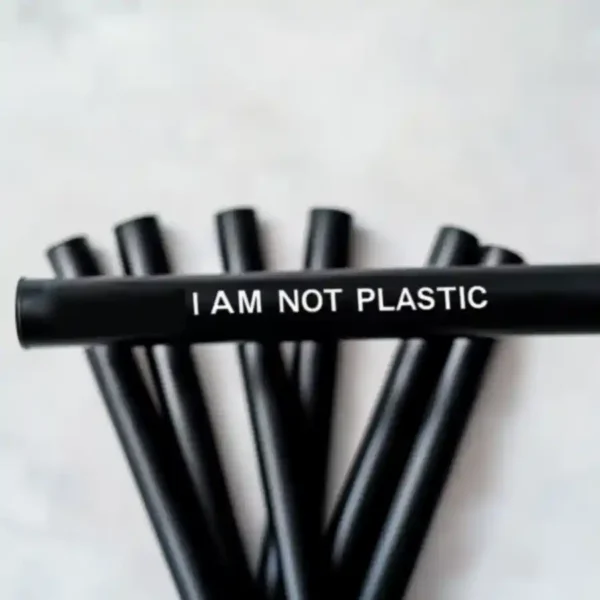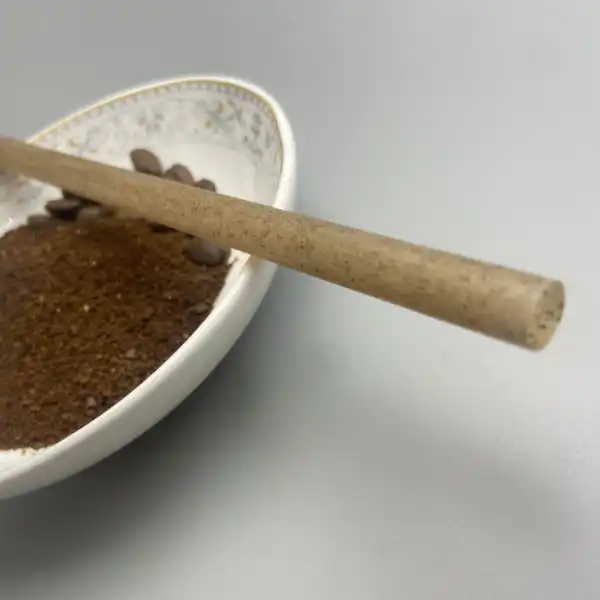
In our collective journey towards a more sustainable lifestyle, the humble straw has emerged as a surprisingly significant battleground. The era of single-use plastic straws, with their centuries-long lifespan in our landfills and oceans, is thankfully drawing to a close. But in the quest for the perfect eco-friendly alternative, we’re faced with a plethora of options: paper, bamboo, metal, glass, and the increasingly popular… sugarcane straw.
Now, if you’re anything like me, the first question that pops into your head when considering a non-plastic straw, especially one made from a plant-based material, is: “Will it get soggy?”
It’s a valid concern. We’ve all experienced the disappointment of a paper straw dissolving into a mushy mess halfway through our favorite iced latte or cocktail. So, let’s cut to the chase and address the elephant in the (sustainable) room: Do sugarcane straws get soggy?
The short answer, and the refreshingly honest truth, is: Not in the way you might expect, and certainly not like those dreaded paper alternatives.
Allow me to elaborate, sharing my own experiences and why I’ve become a firm believer in the power and practicality of sugarcane straws.

Unveiling the Magic: What Exactly Are Sugarcane Straws?
Before we delve deeper into the sogginess factor, let’s appreciate the ingenuity behind these sustainable sipping solutions. Sugarcane straws aren’t simply stalks of sugarcane hollowed out. Instead, they are crafted from the bagasse, the fibrous byproduct that remains after sugarcane stalks have been crushed to extract their sweet juice.
This is where the magic truly lies. Instead of this valuable resource going to waste, it’s repurposed into a sturdy and naturally water-resistant material. The bagasse is typically washed, cut, and sometimes subjected to minimal processing to create a smooth, hygienic, and remarkably durable straw.
Unlike plastic, which is derived from fossil fuels and persists in the environment indefinitely, sugarcane bagasse is a renewable resource. Sugarcane is a fast-growing crop, and utilizing its byproduct for straws contributes to a circular economy, reducing waste and our reliance on harmful plastics. Moreover, sugarcane straws are naturally biodegradable and compostable, meaning they will break down safely and return to the earth, leaving no toxic residues behind.
My Personal Journey: From Skeptic to Sugarcane Enthusiast
Like many, I initially approached the idea of non-plastic straws with a healthy dose of skepticism. My early experiences with flimsy paper straws left a lasting impression of soggy disappointment. So, when sugarcane straws started gaining traction, my first thought was, “Here we go again…”
However, my curiosity, coupled with a growing commitment to reducing my plastic footprint, eventually led me to give them a try. My first encounter was at a local cafe serving iced tea with a light brown, slightly textured straw. I braced myself for the inevitable softening, but to my pleasant surprise, it never really happened.
I nursed that iced tea for a good half-hour, engaging in conversation, and the straw remained remarkably firm. It didn’t bend, it didn’t become mushy, and it certainly didn’t disintegrate. That single experience sparked my interest, and I began actively seeking out drinks served with sugarcane straws.
From refreshing lemonade on a hot summer day to a leisurely enjoyed cocktail in the evening, my experiences have been overwhelmingly positive. I’ve even tested them with thicker beverages like smoothies, and they held up admirably.
The Soggy Truth: It’s a Matter of Degrees and Time
Now, let’s get back to the core question: Can sugarcane straws ever get soggy?
The honest answer is yes, eventually. If you leave a sugarcane straw submerged in liquid for an exceptionally long period – think several hours – you might notice a slight softening around the edges. This is because, being a natural plant-based material, it will eventually begin to absorb moisture.
However, the key difference between sugarcane straws and their paper counterparts lies in the timeframe and the degree of sogginess.
Paper straws often start to lose their rigidity within minutes of being submerged. They can become flimsy, start to peel apart, and ultimately turn into an unpleasant, papery mush that detracts significantly from your drinking experience.
Sugarcane straws, on the other hand, boast a much greater level of natural water resistance. Their fibrous structure and the minimal processing they undergo contribute to their durability. They can comfortably withstand being in your drink for the duration of typical consumption – be it 20 minutes, 45 minutes, or even an hour or more – without becoming significantly soggy or unusable.
In my experience, even after prolonged exposure (we’re talking well over an hour in some cases), the sugarcane straw might feel slightly softer to the touch, but it will still retain its structural integrity and functionality. It won’t collapse or disintegrate in the same frustrating way that paper straws do.
Why Sugarcane Straws Reign Supreme in My Eco-Friendly Arsenal
My positive experiences with sugarcane straws have solidified their place as my preferred sustainable alternative to plastic. Here’s why I’m such a fan:
- Superior Durability: As we’ve discussed, their resistance to sogginess is a game-changer. I can actually enjoy my drink without the straw becoming a distraction.
- Neutral Taste and Smell: Unlike some alternatives, sugarcane straws don’t impart any noticeable flavor or odor to your beverage, ensuring an unadulterated drinking experience.
- Pleasant Texture: They have a smooth, natural feel that is far more appealing than the often rough or papery texture of other options.
- Stronger Environmental Credentials: Being made from a renewable resource (bagasse), utilizing agricultural waste, and being fully biodegradable and compostable, sugarcane straws tick all the right boxes for sustainability.
- Versatility: They are suitable for a wide range of hot and cold beverages.
Addressing the Competition: Sugarcane vs. Other Alternatives
While sugarcane straws have won me over, it’s worth briefly considering how they stack up against other popular eco-friendly options:
- Paper Straws: As mentioned, the sogginess factor is the major drawback. While some thicker, coated paper straws exist, they often come with their own environmental concerns regarding the coating materials.
- Bambu pipetleri: These are durable and reusable, but require cleaning and can sometimes retain flavors. Their production can also have environmental impacts depending on sourcing and processing.
- Metal Straws: Highly durable and reusable, but can feel cold or metallic, and also require thorough cleaning. Their embodied energy from manufacturing can also be a consideration.
- Glass Straws: Elegant and reusable, but fragile and not ideal for on-the-go use. Cleaning is also essential.
In my opinion, sugarcane straws strike a fantastic balance between durability, sustainability, and user experience, especially for single-use scenarios where reusability might not be practical or hygienic.
The Future is Sustainable Sipping: Join the Sugarcane Revolution!
My journey with sugarcane straws has been a refreshing one, to say the least. They’ve proven to be a reliable, enjoyable, and genuinely eco-conscious alternative to plastic. The fear of instant sogginess that plagued my previous experiences with paper straws has been replaced by the satisfaction of a guilt-free and functional sip.
If you’re looking for a sustainable straw option that truly delivers on its promise, I wholeheartedly recommend giving sugarcane straws a try. They are a small change that can make a significant positive impact on our planet, without compromising your enjoyment of your favorite drinks.
Let’s raise a glass (with a sugarcane straw, of course!) to a more sustainable future, one sip at a time.
What are your experiences with sugarcane straws or other sustainable alternatives? Share your thoughts and questions in the comments below! I’d love to hear from you.







